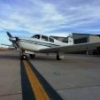Instrument Approach Procedures
-
Members Online
- Marc_B
- Peter T
- Schllc
- TCC
- TNIndy
- da3b242
- sdmideas
- Meshach
- Sabremech
- 1980Mooney
- RichB
- Utah20Gflyer
- TeshDar
- Andy95W
- Griswold
- takair
- BillyT0020
- Bruce Case
- Justin Schmidt
- Dieselman1220
- mgtrevor
- Blaze
- jetdriven
- hubcap
- pkellercfii
- Echo
- Rick Junkin
- hammdo
- Joshua Blackh4t
- Larry
- johnnyr172
- Ron McBride
- raymondscott0321


Recommended Posts
Join the conversation
You can post now and register later. If you have an account, sign in now to post with your account.